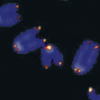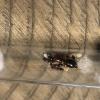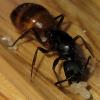Out of 5 C. pennsylvanicus queens captured in 2018, 3 founded colonies. One of those is going strong (150+ workers), the other two queens each died after coming out of diapause 1 and 2 years after founding. I tried urea feeding with all 3 colonies but it wasn’t accepted. In 2019, I purchased a C. americanus colony founded in 2017. I had a 50% die-off in the first year but the colony is still plugging along. In May 2020 I captured a C. novaeboracensis queen who has survived in spite of losing all her nanitics just after diapause. She began to forage for herself, eclosed her first nanitic 2.0 two weeks ago and has a healthy brood pile. In June 2020 another C. pennsylvanicus queen founded a colony that’s now 12-15 with a healthy brood pile. At 4 years, I’m 4 for 8. Go figure. My most prolific colony has majors and minors, my C. americanus had a male which I suspect was an unfertilized egg. I’ve seen posts of other species that have had alates so it’s not isolated but I wonder if that should be the only measure of a colony’s maturity? Does colony size, the appearance of caste differentiation, or the rate of brood production also play a role in determining maturity?
I’ve seen some posts suggesting Camponotus sp are more difficult to raise in captivity. I don’t know. I’ve been lucky with a varied diet of fresh fruit and insects. I freeze the insects and thaw them as I need them to feed. I flash boil the bugs (a 5-7 second dip in microwaved water) to kill off mites and other parasites. That seems to work for me.
![]()




















